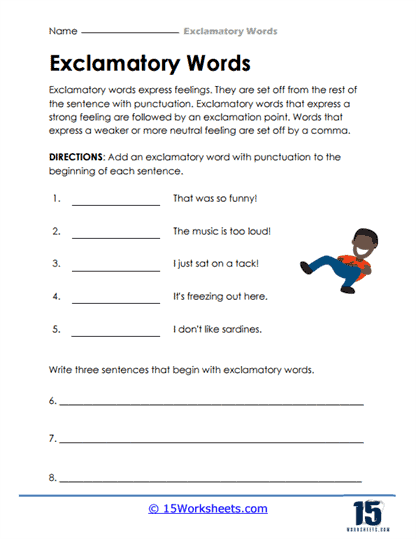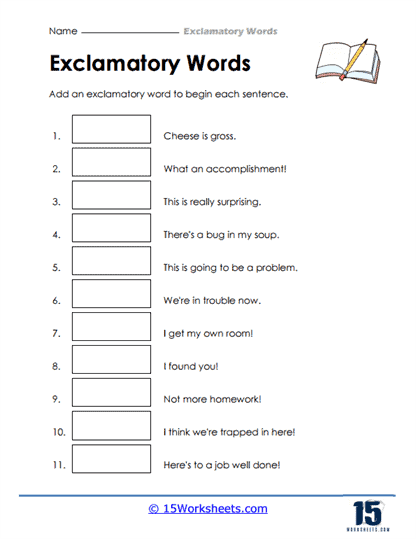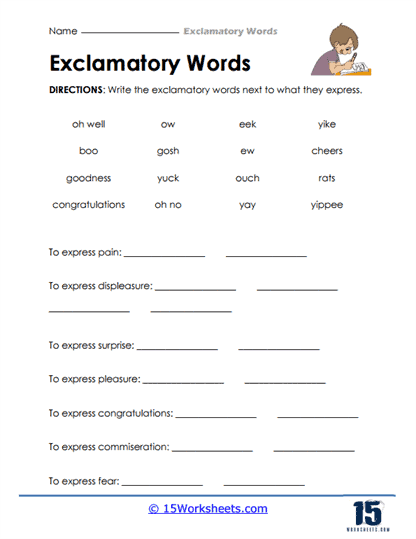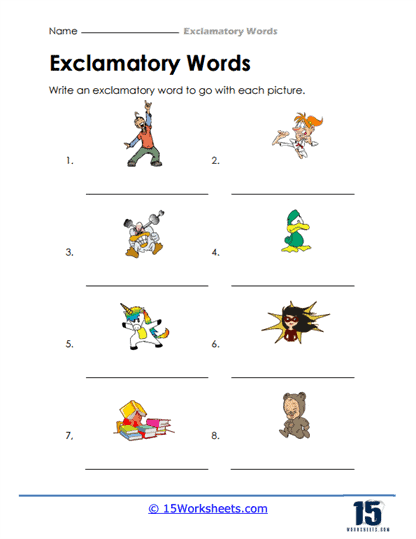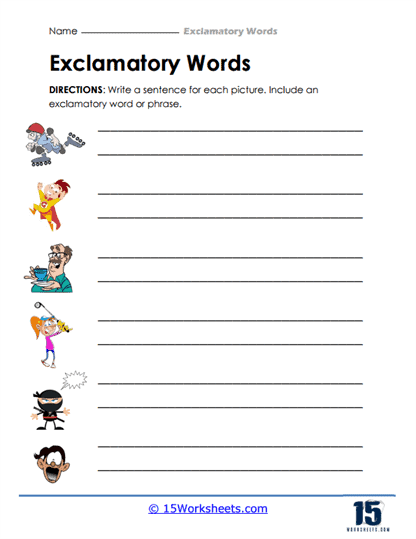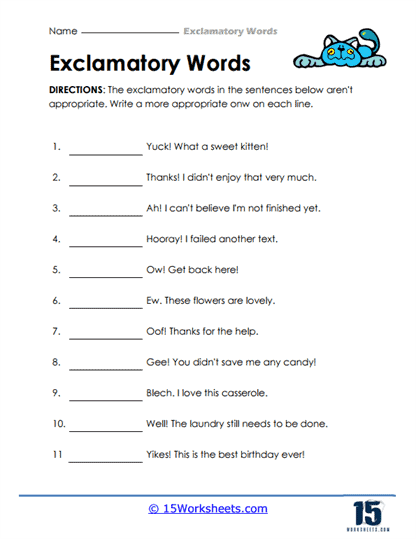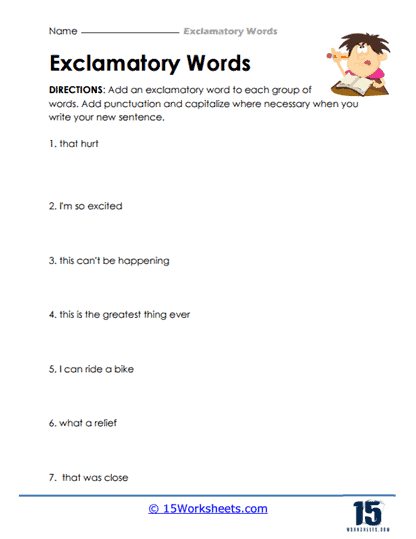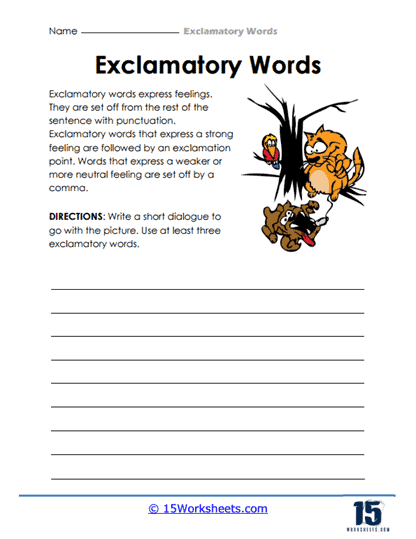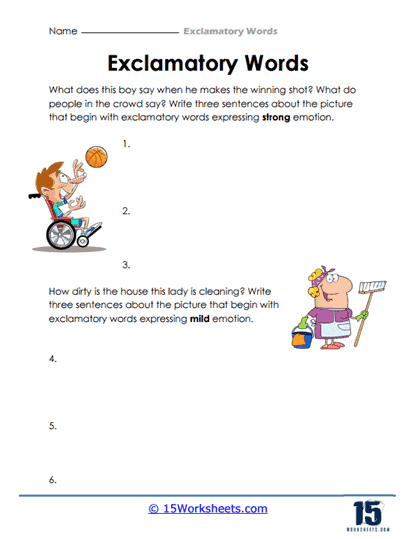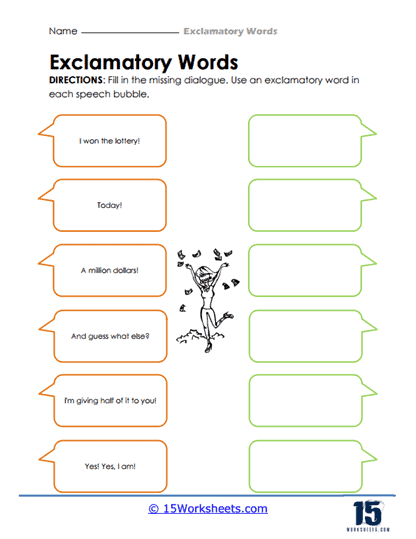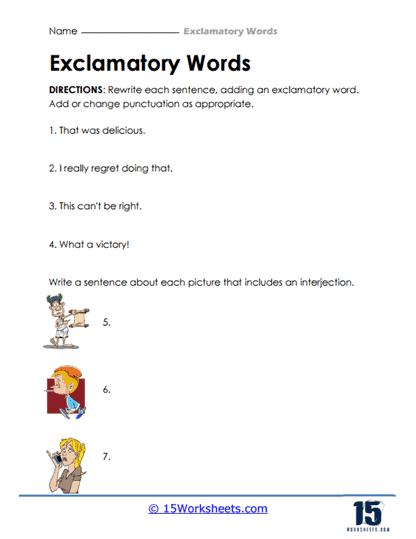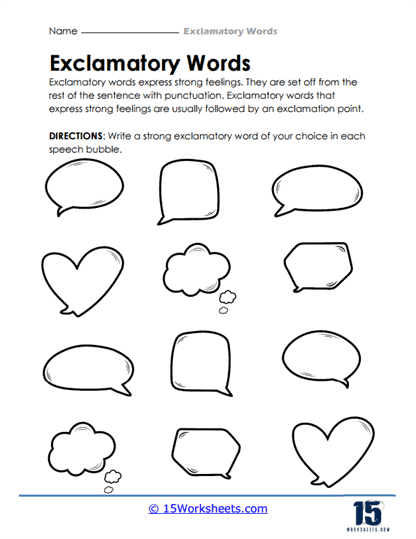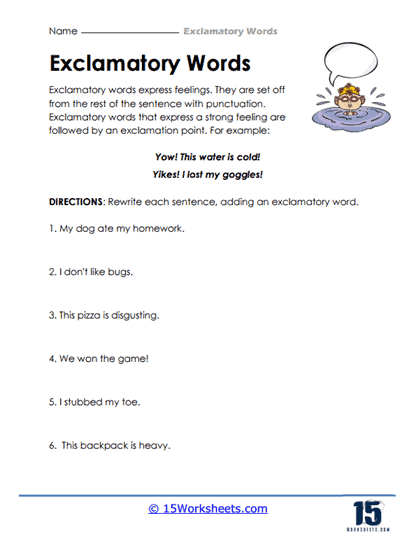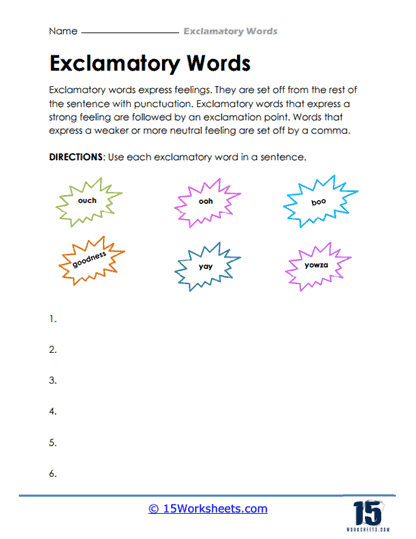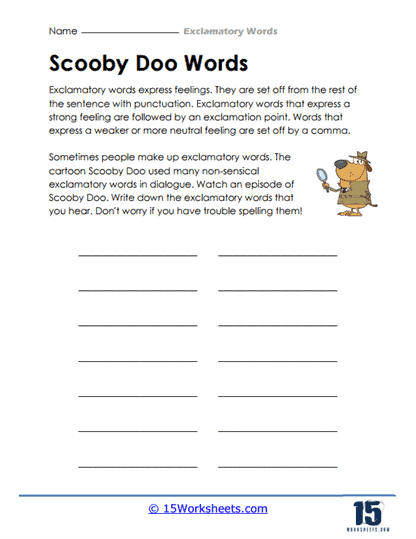Exclamatory Words Worksheets
All About These 15 Worksheets
This series of 15 worksheets focuses on helping students learn and use exclamatory words to add emphasis and emotion to their writing. The exercises in these worksheets aim to teach students how to identify and use exclamatory words appropriately in their writing.
Some exercises in the worksheets may include adding the appropriate exclamatory words with punctuation to sentences to emphasize the emotions being conveyed. For example, students may be asked to add an exclamation mark and an appropriate word like “Wow!” or “Incredible!” to a sentence to express surprise or amazement.
Other exercises include writing sentences that begin with exclamatory words, which can help students learn how to use these words to add emphasis and emotion to their writing. Students are also asked to identify different emotions and feelings that can be conveyed through exclamatory words, such as excitement, awe, or frustration.
Additionally, some exercises include matching pictures to the appropriate exclamatory words, correcting sentences that use exclamatory words incorrectly, and writing their own exclamatory words or sentences.
Learning how to use exclamatory words can be a fun and engaging way for students to develop their writing skills and learn how to convey emotions and feelings effectively. By using these words appropriately, students can add excitement, emphasis, and emotion to their writing, making it more engaging and interesting for their readers.
Overall, these worksheets provide an excellent resource for teachers and homeschooling parents who are looking to help their students improve their writing skills and develop a deeper understanding of how language can be used to express emotions and feelings through the use of exclamatory words.
What are Exclamatory Words?
Exclamatory words, also known as interjections or exclamations, are words or short phrases used to express strong emotions, reactions, or feelings, such as surprise, excitement, joy, disbelief, pain, or annoyance. These words often stand alone or are placed at the beginning of a sentence to convey a spontaneous, emotional response. Exclamatory words are typically followed by an exclamation mark (!) to emphasize the intensity of the emotion being expressed.
Some common examples of exclamatory words include:
- Wow! – used to express surprise, amazement, or admiration
- Ouch! – used to express pain or discomfort
- Hooray! – used to express joy, triumph, or approval
- Oops! – used to express a small mistake or an accident
- Uh-oh! – used to express concern or the realization that something has gone wrong
- Yikes! – used to express fear, alarm, or surprise
- Eureka! – used to express a sudden insight, discovery, or invention
- Bravo! – used to express approval or praise, often for a performance
Exclamatory words play an essential role in communication by adding expressiveness, color, and emotional depth to language. They help convey the speaker’s or writer’s feelings more effectively and create a more engaging, relatable, and dynamic tone in conversations or written text. However, it is essential to use exclamatory words judiciously, as overusing them can diminish their impact and make the communication seem overly emotional or informal.

